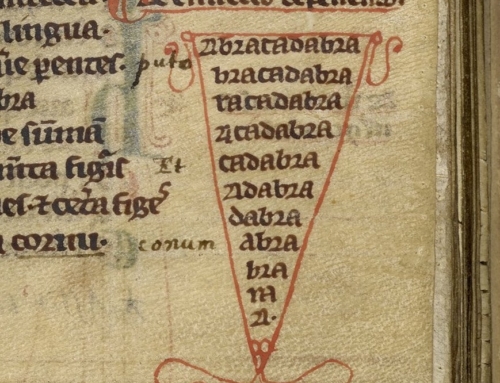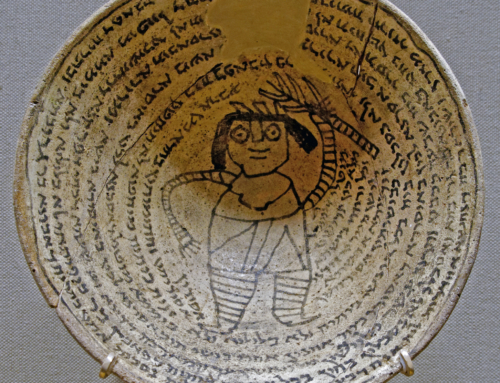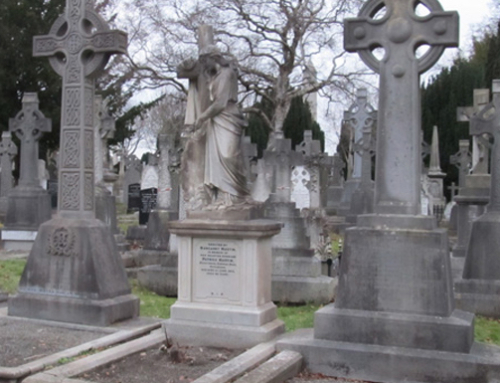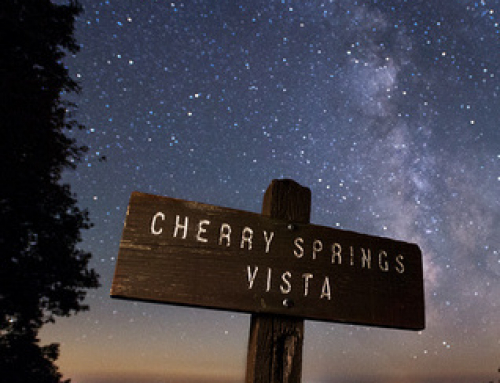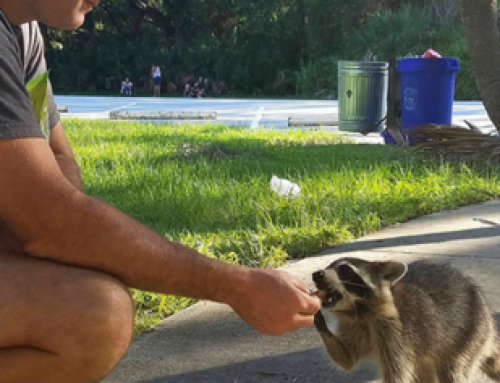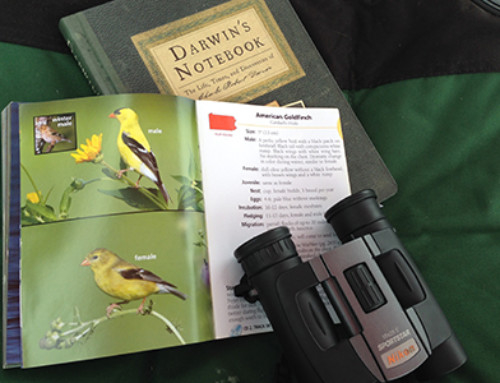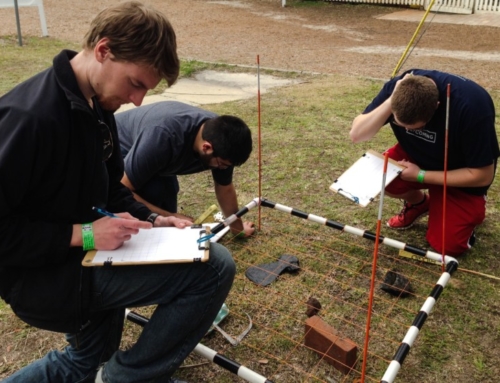Kneeling in the weeds in what would become Muncy Heritage Park and Nature Trail, Bill Poulton brushed aside debris. He knew the old well was near the defunct canal, but after decades of neglect, tiger lilies, poison ivy and oak trees had overgrown the small patch of land. He pounded an iron bar into the ground. “It’s right about here,” he said, then the bar struck something solid.
My Lycoming College archaeology students swarmed the spot and fell to their knees. Eager to reveal the treasure, they used their bare hands to yank the grass and roots, then sweep away the soil. Soon, they revealed a large concrete pad.
I traced the etched surface and read aloud the date: “Oct 22 1928.”
A bit more digging and a lot of heavy lifting and the well cover was removed. We revealed the stone well that had served Lock No. 28 on the West Branch Canal.
Hidden from sight for more than 75 years, the drinking well that once provided fresh, clean drinking water to thousands of canal travelers, became the first archaeological artifact recovered and recorded at Muncy Heritage Park and Nature Trail.
Poulton, president of Muncy Historical Society, and his wife, Linda, editor of “Now and Then,” the society’s journal, are the driving forces behind the society’s creation of the park. Carved out of an 11-acre parcel that Betty Fisher donated to the society, the Heritage Park commemorates the historic role of Muncy and the 19th Century West Branch Canal.
Poulton invited Lycoming College to help him locate the lock tender’s well and house foundation. So began a partnership that spans a decade.
The 2005 archaeology field school was the first to explore and excavate at the Heritage Park. The task of completing the excavation fell on the shoulders of the community.
We issued the invitation, and people volunteered. During the next four years, thousands of people, from Pennsylvania and beyond, visited the park to try their hand at archaeology, learning about local history as they carefully uncovered brick, nails, pottery, glass and more at the historical site. Some people even planned vacations around a park visit, having learned of the Public Archaeology Dig from the Conde Nast publication, “Cookie,” and an airline magazine.
Most archaeology site locations are not promoted, but at Muncy, publicity was encouraged. The concept of a Public Archaeology Dig is to invite the community to volunteer and support our shared cultural heritage.
People ages 3 years to 85 years participated in the dig. Younger volunteers attended with parents or teachers, and were closely monitored. Often, the younger workers preferred digging worms and beetles.
There’s a tradeoff with every archaeology dig. Archaeology is 100 percent destructive. We dig a big hole and remove every particle of soil, sifting it through a mesh screen. What remains behind, if it’s an artifact, goes into a bag and leaves the site. What goes through, is pushed back into the hole when we’re done.
If we don’t record every action and location of every item, then this data is lost and the story doesn’t get told.
When a trained college student or adult performs the task, most of the information can be saved. When a 6-year-old wields a trowel, all bets are off.
That’s why it was important to begin each archaeology season with a field school, with college students collecting data with accuracy, before allowing the public to damage the site.
The tradeoff pays out when that 6-year-old grows up and recalls that moment of rapture when she discovered an ancient bit of broken glass, as precious as a gem, and she is committed to preserving and protecting and supporting future archaeological investigations. We will lose provenience of a few artifacts, but we may save our cultural heritage.
Being the first person to join the project means I am witness to all the improvements made since May 9, 2005, our first day.
Each new season, we watched as Poulton and his volunteers transformed the park around us. Workers cleared fields and removed dead trees. They built trails and installed interpretive panels. They erected pavilions and placed benches in strategic locations. Boy Scouts developed Eagle projects there, building bird blinds and bridges. New trees and a wildflower garden adorned the new park, attracting birds and butterflies.
I’ve always known the hidden, buried beauty of Muncy Heritage Park, but soon others noticed. People began walking the paths and fishing at the river. Bird watchers planned outings, and amateur astronomers set their telescopes up at night.
Muncy Heritage Park is an outstanding example of inspired leadership, and I’m thrilled to have been a part of the project from its inception.
To this day, I continue to support the park, and volunteer for events such as the Youth Fishing Derby, the Arch in the Park, and Night Sky telescope viewings.
I continue to take college students to the park for the grandiose tours Poulton gives, and I admire his vision and perseverance. He tells the story of how he used to mow the grass there more than 40 years ago, and would daydream of what it could be.
Now, with the support of scores of volunteers and generous grants and endowments, Poulton has realized that dream. With his inspired leadership, we have created a legacy for generations to come.


